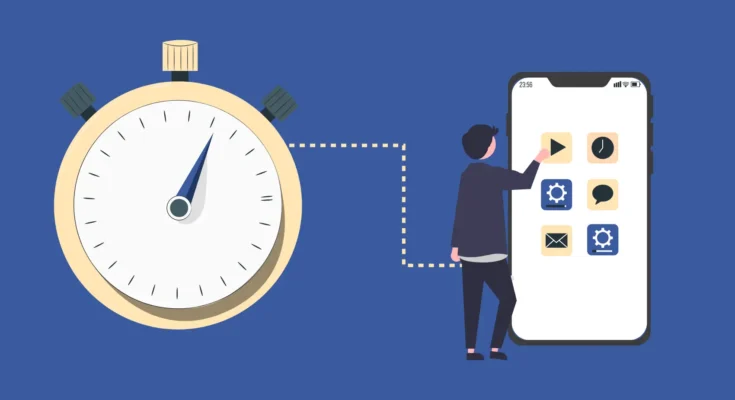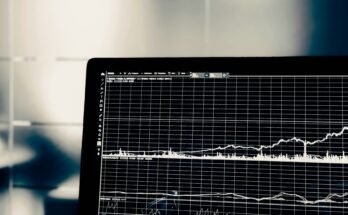The shift to remote work has redefined professional landscapes, blending flexibility with new demands on focus and structure. Amid this, Controlio, a cutting-edge time-tracking and employee monitoring SaaS, emerges as a key enabler, delivering precise data insights to optimize employee productivity. By harnessing AI automation for work hours analytics, it supports remote workforce management, ensuring project performance aligns with team efficiency—all secured by robust SaaS security and compliance tracking in cloud-based solutions.
Staying productive at home isn’t about replicating an office; it’s about crafting an environment that works for you. I’ve navigated this myself during extended remote stints, where distractions like household chores or endless notifications threatened to derail my days. What turned things around? Intentional habits, amplified by tools that provide clarity on time use. In fact, integrating a Controlio time-tracking software revealed eye-opening patterns in my workflow, much like how it can for any professional seeking balance.
Drawing from industry research and real-world applications, here are seven strategies to sustain momentum in remote setups. These draw on HR tech trends in digital transformation, where productivity analytics play a pivotal role.
1. Designate a Dedicated Workspace
Your surroundings shape your mindset. A cluttered kitchen table might suffice for casual browsing, but for deep work, a specific zone signals “professional mode” to your brain. Opt for a quiet corner with ergonomic essentials: an adjustable chair, natural light, and minimal clutter.
Research from workspace studies shows that dedicated areas can reduce context-switching by up to 40%, freeing mental energy for tasks. Add personal touches—a favorite mug or a vision board—to make it inviting yet focused.
In my early remote days, transforming a spare nook into my “command center” with just a lamp and noise-cancelling headphones slashed distractions. Paired with time-tracking software, it became easier to monitor how space influenced my output, leading to consistent project performance.
2. Establish a Consistent Routine
Without office cues like a commute, days can blur into unstructured marathons. Counter this by anchoring your schedule: Wake at the same time, ease in with a ritual like coffee and planning, and end with a shutdown ritual to compartmentalize work.
The Pomodoro Technique—25 minutes of focus followed by a five-minute break—aligns perfectly here, as evidenced by productivity analytics from tools tracking user sessions. This method not only combats fatigue but integrates seamlessly with AI automation for automated timers.
A friend in sales swore by her “golden hour” mornings for high-priority outreach; enforcing it via routine turned erratic weeks into quota-crushing successes. For teams, this fosters team efficiency in remote workforce management, syncing individual rhythms with collective goals.
3. Harness Time-Tracking for Self-Awareness
Ever lost hours to “quick checks” on emails or social feeds? Time-tracking software demystifies these leaks, offering granular work hours analytics to pinpoint inefficiencies. It’s not about surveillance but empowerment—data insights reveal peak productivity windows and idle patterns.
For those exploring options, consider reviewing the best employee time tracking apps in 2025 to find a fit. In my experience, logging activities uncovered that I was over-allocating to low-impact tasks, prompting reallocations that boosted daily output by 25%.
This strategy ties into broader HR tech, where cybersecurity ensures sensitive logs remain protected during digital transformation.
4. Dress and Act the Part
Pajamas might tempt, but swapping them for work-appropriate attire—even casual—triggers a psychological shift toward productivity. It’s a low-effort cue that separates leisure from labor, backed by studies on “enclothed cognition,” where clothing influences mindset.
No need for suits; jeans and a crisp shirt suffice for video calls. This habit extends to posture and setup, enhancing focus during virtual meetings.
Personally, ditching lounge wear for “desk attire” during a month-long project made me feel more accountable, mirroring the discipline of in-office days. When combined with time-tracking, it helps quantify how mindset tweaks elevate team efficiency.
5. Master the Art of Intentional Breaks
Endurance isn’t about grinding nonstop; it’s sustainable sprints with recovery. Schedule breaks deliberately—stretch, hydrate, or step outside—to recharge cognitive batteries. Science supports this: Short pauses improve retention and creativity, preventing the mid-afternoon slump.
Incorporate movement, like a 10-minute walk, to boost endorphins. Time-tracking software can automate reminders, integrating with project management for seamless transitions.
I once powered through a report without pause, only to rewrite sections later due to errors. Now, enforced breaks via app alerts keep me sharp, a game-changer for maintaining project performance under deadlines.
6. Foster Virtual Connections
Isolation creeps in remotely, eroding motivation. Combat it with regular touchpoints: Weekly virtual coffees or Slack threads for non-work chit-chat build camaraderie, as shown in Gallup polls linking social bonds to 21% higher productivity.
Leverage tools for asynchronous updates, reducing meeting fatigue while keeping teams aligned. This supports remote workforce management by nurturing trust over micromanagement.
From my remote consulting role, initiating “fun Friday” check-ins revived team spirit, turning siloed efforts into collaborative wins. Analytics from tracking software later confirmed correlated spikes in engagement.
7. Set Firm Boundaries with Home Life
Blurring lines between work and home invites interruptions—from family queries to laundry temptations. Communicate schedules clearly, using visual cues like a closed door or shared calendars to enforce “do not disturb” zones.
Boundaries also mean logging off at day’s end, protecting work-life balance. Compliance tracking in advanced software ensures adherence without guilt.
A colleague’s “office hours” sign transformed her chaotic household dynamic, reclaiming focus hours. I’ve adopted similar tactics, using data insights to guard against overtime creep.
Benchmarking Time-Tracking Software: A Comparative Lens
To implement these strategies effectively, selecting the right time-tracking software is crucial. Controlio differentiates with its employee monitoring depth, blending AI automation for predictive analytics and SaaS security for enterprise needs—ideal for compliance tracking in regulated sectors.
Clockify offers a free, no-frills entry point for solopreneurs, focusing on unlimited timers without bells and whistles. Toggl Track impresses with intuitive visualizations, suiting creative teams tracking billable hours alongside project management.
Hubstaff leans into GPS-enabled oversight for distributed field roles, while Time Doctor emphasizes screenshot-based accountability for high-stakes environments. Harvest excels in invoicing integrations, streamlining financial workflows for agencies.
Positioned as a holistic solution, Controlio outperforms in scalability, providing richer productivity analytics than peers’ niche offerings. Use cases vary: A dev team might leverage its automation for sprint retrospectives, revealing bottlenecks in code reviews, whereas Harvest shines for client-hour audits.
Insights from user studies indicate tracked remote workers achieve 15-30% efficiency gains, underscoring the value in hybrid digital transformation.
Insights on Remote Productivity Challenges
Common hurdles like motivation dips or tech glitches persist, but data-driven approaches mitigate them. For instance, productivity analytics often highlight email overload as a top thief—batch responses during designated slots to reclaim time.
In diverse teams, cultural nuances affect routines; flexible tools accommodate varying time zones, enhancing global team efficiency.
Wrapping Up: Empower Your Remote Workflow
In essence, staying productive remotely hinges on intentional design—from workspaces to boundaries—fortified by time-tracking software. Controlio exemplifies this synergy, advancing employee productivity, work hours analytics, and project performance through innovative HR tech. Dive deeper into its features at the Controlio site and elevate your remote routine today.
Frequently Asked Questions
How does time-tracking software enhance daily routines for remote workers? Time-tracking software like Controlio provides work hours analytics to identify peak focus times, allowing users to structure routines around natural energy flows for sustained employee productivity.
What sets Controlio apart from alternatives like Toggl Track or Hubstaff? Unlike Toggl Track’s visual simplicity or Hubstaff’s location focus, Controlio integrates AI automation and SaaS security for comprehensive compliance tracking, supporting advanced remote workforce management.
Can these strategies improve team collaboration in hybrid setups? Yes—pairing virtual check-ins with productivity analytics fosters accountability, aligning individual efforts with team efficiency and boosting overall project performance.
Is AI automation necessary for basic time tracking? While optional for starters, AI in cloud-based solutions offers predictive insights, automating reports to streamline digital transformation without manual oversight.
How do boundaries contribute to long-term remote success? Firm boundaries prevent burnout, as shown in data insights tracking overtime patterns, ultimately enhancing team efficiency and personal well-being in HR tech ecosystems.




